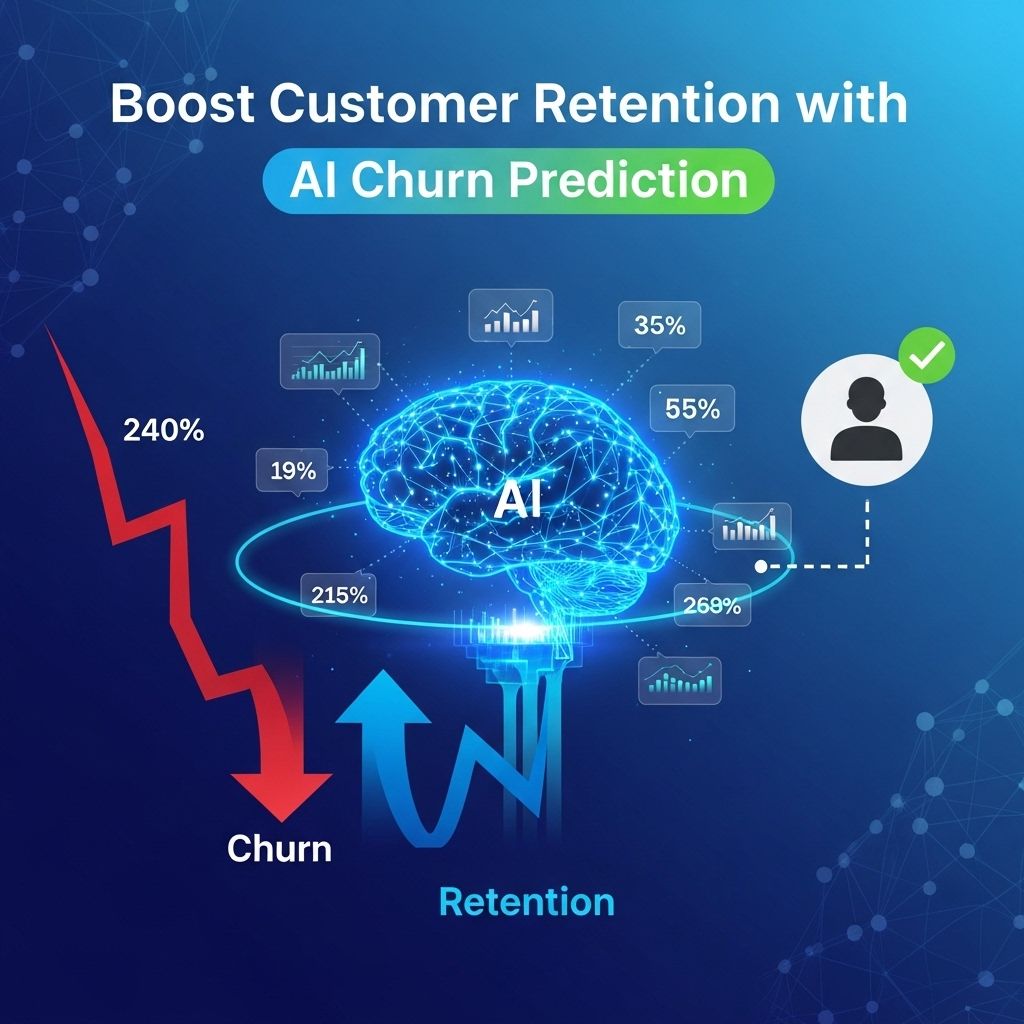Unlock Customer Loyalty with AI Churn Prediction
Discover how AI churn prediction can enhance customer loyalty by identifying at-risk customers and improving retention strategies.

In today’s fiercely competitive market, understanding customer behavior has become more crucial than ever. Businesses are constantly seeking innovative ways to enhance customer satisfaction and loyalty while minimizing churn. One of the most effective approaches is leveraging artificial intelligence (AI) for churn prediction. By harnessing AI’s capabilities, organizations can identify at-risk customers and implement targeted strategies to retain them, thus unlocking unparalleled customer loyalty.
Table of Contents
Understanding Churn Prediction
Churn prediction is the process of analyzing customer data to forecast which customers are likely to stop using a service or product. This predictive analytics technique is driven by machine learning algorithms that analyze historical data and customer behaviors to identify warning signs of potential churn.
Key Concepts in Churn Prediction
- Customer Segmentation: Dividing customers into distinct groups based on various characteristics.
- Behavioral Analysis: Studying customer interactions to understand usage patterns.
- Predictive Modeling: Utilizing statistical models to forecast future behaviors based on past data.
- Retention Strategies: Developing tailored approaches to keep at-risk customers engaged.
The Role of AI in Churn Prediction
AI enhances churn prediction by automating data analysis and offering deeper insights than traditional methods. Here’s how:
Enhanced Data Analysis
AI algorithms can sift through vast amounts of data at speeds unattainable by human analysts. This allows businesses to:
- Identify Patterns: Recognize trends and correlations within customer behavior.
- Segment Effectively: Create refined customer segments based on intricate data points.
Real-Time Insights
With AI, companies can gain real-time insights into customer activities, enabling them to take proactive measures. For instance:
| Scenario | AI Action | Outcome |
|---|---|---|
| Customer spends less time on the platform | Trigger engagement campaign | Increased usage |
| Customer raises a support ticket | Send personalized follow-up | Enhanced satisfaction |
Implementing AI for Churn Prediction
Integrating AI into churn prediction requires a structured approach. Here’s a step-by-step guide:
1. Data Collection
Gather data from various sources, including:
- Customer transactions
- Support interactions
- Website engagement metrics
- Social media activity
2. Data Preprocessing
Clean and organize data to remove inconsistencies and ensure accuracy. This step includes:
- Removing duplicates
- Handling missing values
- Normalizing data formats
3. Choosing the Right Model
Select the appropriate AI/ML models for your requirements, such as:
- Logistic Regression
- Random Forest
- Neural Networks
4. Training the Model
Utilize historical data to train the model, following these best practices:
- Split data into training and test sets
- Optimize model parameters
- Evaluate performance metrics
5. Ongoing Monitoring and Improvement
Continuously monitor the model’s performance and refine it as needed to adapt to new trends and data. This ensures:
- Higher accuracy in predictions
- Effective retention strategies
Benefits of AI-Driven Churn Prediction
Implementing AI for churn prediction offers numerous advantages, including:
- Increased Retention Rates: By identifying at-risk customers, businesses can take proactive measures to retain them.
- Improved Customer Insights: Gain deeper understanding of customer needs and preferences.
- Cost Efficiency: Reduce costs associated with acquiring new customers by retaining existing ones.
- Enhanced Marketing ROI: Targeted marketing campaigns result in higher conversion rates.
Challenges and Considerations
While AI presents remarkable opportunities for churn prediction, there are challenges that businesses may face:
Data Privacy Concerns
With increasing regulations on data privacy, companies must ensure compliance while utilizing customer data.
Implementation Costs
Integrating AI technologies can require significant investment in infrastructure and expertise.
Skills Gap
Finding skilled professionals to implement and manage AI solutions can be challenging.
Case Studies of Successful Implementation
Examining real-world applications of AI in churn prediction can provide valuable insights:
Telecommunications Industry
A leading telecom company used AI to analyze customer data and predict churn. By implementing targeted retention strategies, they reduced churn rates by 15% within a year.
E-commerce Sector
An online retail giant employed AI to identify customers who abandoned their carts. By sending personalized follow-ups, they improved conversion rates by 20%.
Conclusion
As businesses strive to build lasting relationships with customers, leveraging AI for churn prediction emerges as a vital strategy. By utilizing advanced analytics and machine learning, organizations can unlock customer loyalty, drive revenue growth, and stay ahead of the competition. Embracing this technology not only helps in predicting customer behavior but also in crafting personalized experiences that resonate with today’s tech-savvy audience.
FAQ
What is AI churn prediction?
AI churn prediction uses artificial intelligence algorithms to analyze customer data and identify patterns that indicate when a customer is likely to leave or stop using a service.
How does churn prediction help in customer retention?
By predicting which customers are at risk of churning, businesses can proactively engage with these customers using targeted strategies to improve their experience and enhance loyalty.
What data is required for AI churn prediction?
AI churn prediction typically requires historical customer behavior data, transaction history, customer demographics, and engagement metrics to build accurate predictive models.
Can small businesses benefit from AI churn prediction?
Yes, small businesses can leverage AI churn prediction to better understand their customer base, improve retention strategies, and ultimately drive growth and profitability.
What are the key benefits of implementing churn prediction models?
Key benefits include increased customer retention rates, improved customer satisfaction, enhanced marketing efficiency, and higher revenue through better-targeted offers and interventions.
Is AI churn prediction expensive to implement?
The cost of implementing AI churn prediction can vary, but many affordable tools and software solutions are available that cater to different business sizes and budgets.


